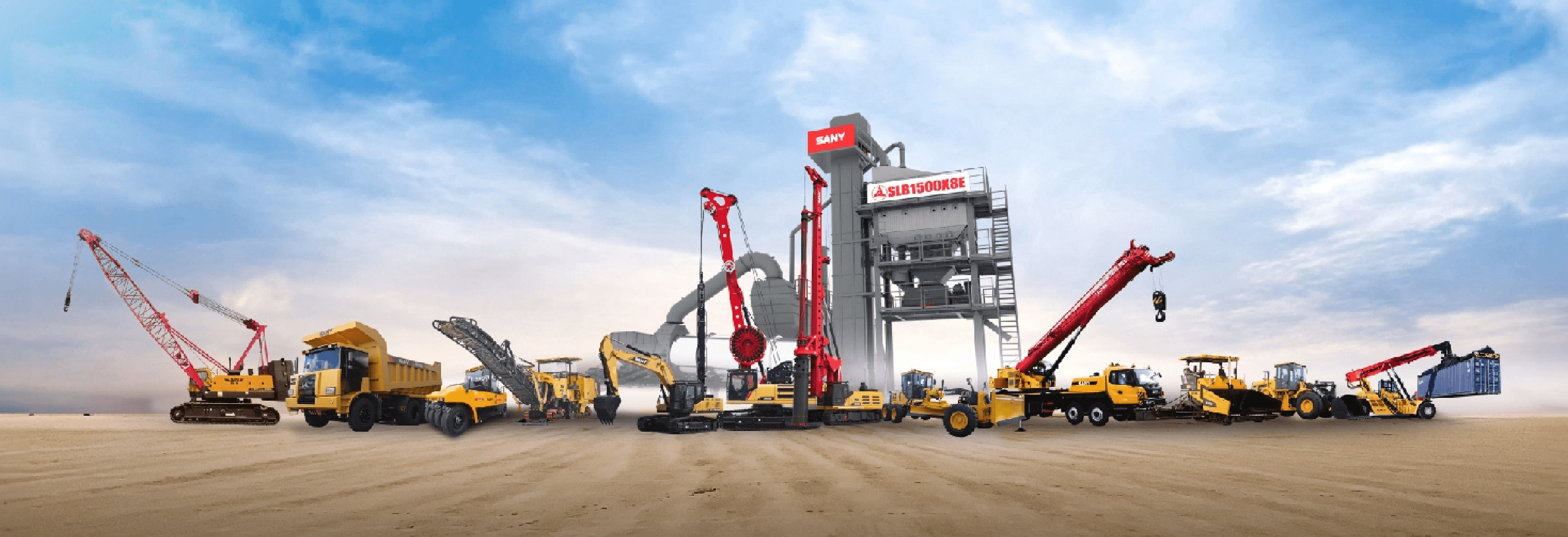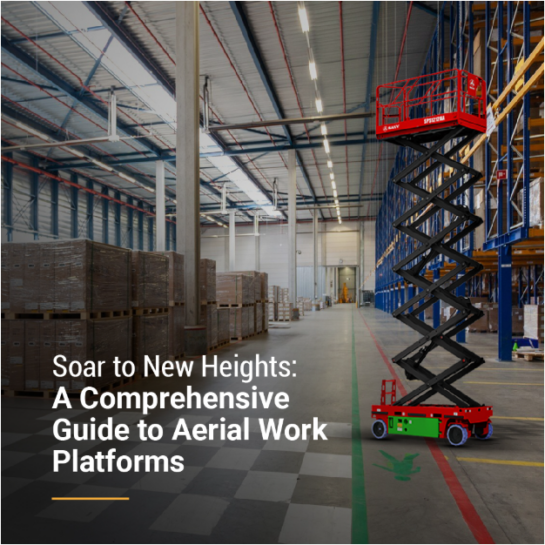Aerial Work Platforms: Your Essential Selection Checklist
Category: Aerial Work Platform | 25 February 2025

Are you looking for a reliable machine to safely lift workers to perform tasks like repairing overhead electrical wires? For these types of jobs, you require a specialized solution—Aerial Work Platforms. Whether it's for construction, maintenance, or repairs, Aerial Work Platforms (AWPs) are essential tools to ensure safety, increase productivity, and handle tasks at various heights.
But with so many options available, how do you know which AWP is the right fit for your project? Let’s dive into this comprehensive guide to help you choose the perfect Aerial Work Platform.
What is an Aerial Work Platform?
An Aerial Work Platform (AWP) also known as an Elevated Work Platform (EWP) is a mechanical device used to provide temporary access to workers at elevated heights. These platforms are typically equipped with safety features such as guardrails and fall protection systems, allowing workers to safely perform tasks in elevated positions. AWPs are widely used in industries such as construction, maintenance, and warehousing.
What are the Major Types of Aerial Work Platforms and Their Applications?
When it comes to aerial work platforms, selecting the right one depends on the type of task and the work environment. Below are the major types of aerial lift platforms and their common applications:
Telescopic Lifts:
Telescopic lifts, also known as straight or stick booms, are perfect for tasks that require extended reach at a fixed height. These are ideal for jobs like tree trimming, construction, and steelwork installations, where a worker needs to access hard-to-reach areas.
Boom Lifts:
Boom lifts provide more flexibility than telescopic lifts, with extendable arms that can move horizontally and vertically. They are best suited for jobs that require versatile movement, such as electrical maintenance or window cleaning at varying heights and angles.
Spider Lifts:
Known for their lightweight design and compact structure, spider lifts are perfect for navigating narrow and confined spaces. These lifts are often used in tasks requiring access to difficult areas such as indoor maintenance or confined outdoor spaces.
Scissor Lifts:
Scissor lifts offer a stable, vertical lifting motion. With a large platform, they are ideal for jobs requiring access to large surface areas at heights, such as painting, roofing, or ceiling installations.
Vertical Personnel Lifts:
These lifts are lightweight and designed for one person. They are used primarily for indoor jobs like changing light bulbs or performing repairs in warehouses or offices.
Articulated Lifts
Also known as knuckle booms, articulated lifts feature multiple sections that bend, allowing them to navigate around obstacles. These are ideal for accessing areas where straight lifts may not reach, such as construction work around buildings with overhangs.
Checklist for Choosing the Right Aerial Work Platform
Now that you know the different types of AWPs, it's crucial to evaluate your needs using the following checklist for aerial work platform selection:
Location:
Consider whether your project is indoors or outdoors. For indoor projects, you'll need compact lifts like spider or vertical personnel lifts. For outdoor work, boom or telescopic lifts may be better suited, especially in rugged environments.
Budget:
Establish a clear budget for your project. High-end models with advanced features may offer better functionality, but also come with higher costs. Evaluate your financial constraints and choose a lift that provides the best value for your budget.
Height Limit:
Ensure the platform you choose can reach the necessary height for your project. Different platforms come with varying height limits, so it's important to select one that meets your elevation requirements.
Load Capacity:
Consider how much weight the platform needs to support. This includes both the worker(s) and their equipment. Make sure the selected AWP has the necessary load capacity to handle your specific tasks.
Safety Features:
Safety should always be a top priority. Look for AWPs that come equipped with essential safety features such as guardrails, fall protection, and emergency turn-off systems.
Regulations Compliance:
Ensure that the aerial platform complies with local safety regulations and industry standards. This is crucial for avoiding fines and ensuring the safety of your workers.
Terrain:
Assess the terrain where the lift will be used. For uneven or rugged surfaces, a boom or telescopic platform with off-road capabilities may be required. For smoother surfaces, scissor lifts or personnel lifts might suffice.
Power Source:
Determine whether an electric, diesel, or hybrid-powered lift is most suitable for your project. Electric AWPs are typically quieter and better for indoor use, while diesel-powered lifts offer more power and are suited for outdoor tasks.
Maintenance and Replacement Parts:
Choose a brand that offers easy access to maintenance services and replacement parts. This ensures that your AWP stays operational with minimal downtime.
Final Thoughts
Selecting the right aerial work platform is essential for ensuring safety, efficiency, and productivity in your projects. By using this checklist and understanding the various types of AWPs and their applications, you can make an informed decision that meets your project’s needs.
At Sany India, we offer top-quality construction equipment specifically designed to withstand India's diverse environmental conditions. With our advanced engineering and 260 touch points across the country, our equipment is trusted by professionals for its reliability, durability, and after-sales services. Whether you need a crawler excavator or a telescopic crane, Sany India construction equipment will stand strong on your requirements.


